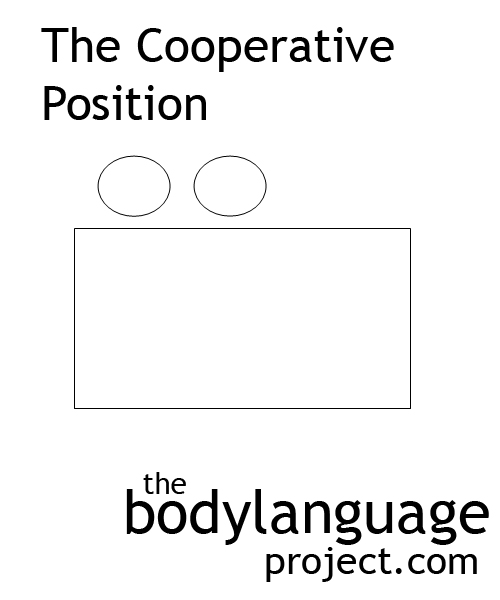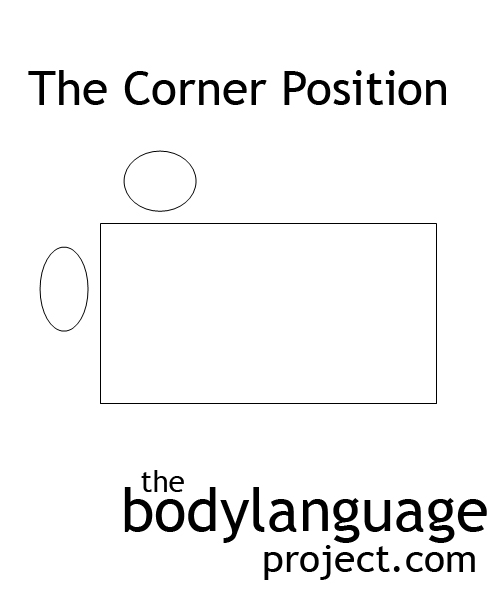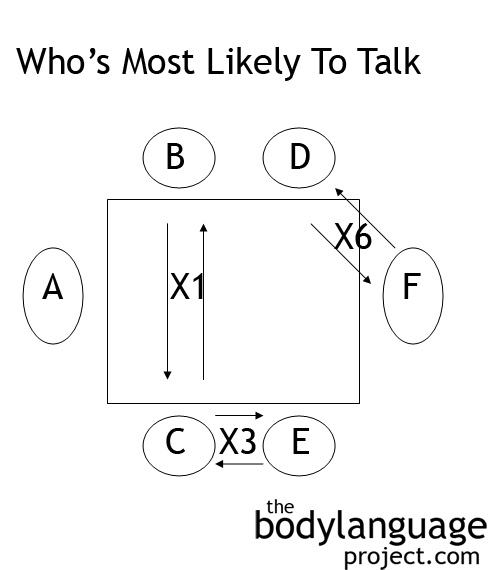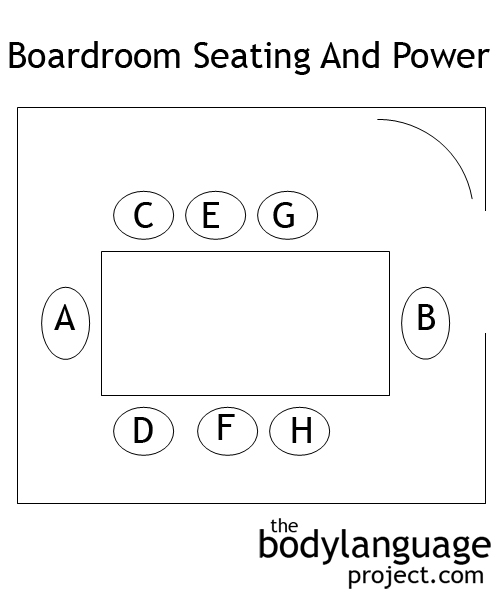
Chairs on the same side of the table is the “cooperative” seating arrangement as no barrier is present between the participants. It is the most open way of interacting.
The cooperative position contrasts the casual corner position with a side-by-side orientation on the same side of the table rather than kitty-corner or cross-corner. There are two possible arrangements for the side-by-side and the variants determine the level of connectivity and interaction between two people. When the chairs are facing forward, or toward the table, it slightly inhibits eye contact decreasing the level of sharing. This orientation shows that there is some cooperation but that it’s not complete. When chairs are facing forward in this manner, it is usually because it is assumed that people are already a part of your team and the two of you are facing off against another party.
A second orientation happens when collaborating on a project. Here, the chairs will (and should) be turned at forty-five degrees toward each other. This arrangement represents intimacy since there is no barrier to interfere with the sharing of information. Working on a common goal, a project or presentation are a few examples of when it’s best to use this arrangement. Intimate couples will also choose this position at restaurants except where moving the chairs about is not permitted. Other couples fail to see this and instead choose competitive arrangements as if they are on job interviews, or are facing off against each other in twenty questions!
There are times when sitting on the same side of the table can appear too intimate, as if invading someone else’s space. One can begin by taking up positions across the table and then finding an excuse to pass documents across it. After some time, moving to the other side of the table and sitting down to clarify the information provides enough of a reason to bridge the gap between people and being fostering intimacy.




